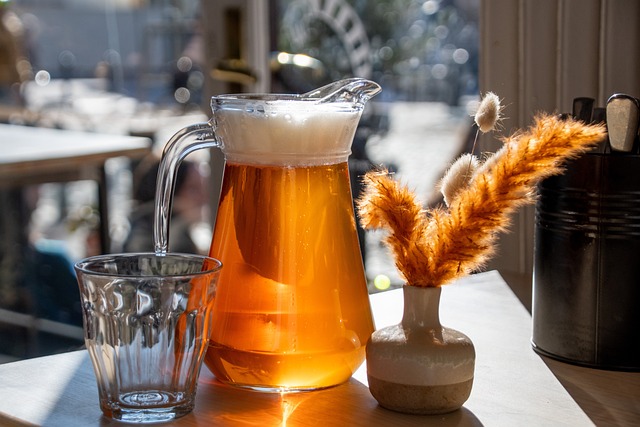What is Beer and Its Alcohol Content?
Beer is one of the oldest and most widely consumed alcoholic beverages in the world. It is primarily made from four basic ingredients: water, malted barley, hops, and yeast. The process of brewing beer involves fermentation, where yeast converts sugars from the malt into alcohol and carbon dioxide, giving beer its alcohol content and carbonation. But, is beer a 100% alcohol? Absolutely not. The alcohol content of beer typically ranges from about 3% to 12% by volume, depending on the style and brewing process. This makes beer a beverage with varying levels of alcohol, but nowhere near 100%.
The percentage of alcohol in beer is measured by volume, indicating the amount of ethanol present in the liquid. For example, a beer with 5% alcohol by volume (ABV) means that 5% of the total volume of the beer is pure ethanol. Light beers generally have lower alcohol content, while stronger ales and lagers may have higher levels. It is important for consumers to understand these percentages to drink responsibly and according to personal tolerance.
When comparing to other alcoholic beverages such as vodka or whiskey, which can have alcohol content as high as 40%-50% ABV, beer is considerably weaker. This difference is crucial for making informed choices about consumption, especially in social settings where various types of alcoholic drinks may be available.
How is Beer Brewed and Its Impact on Alcohol Strength?
The brewing process significantly impacts the alcohol strength of beer. It begins with mashing, where malted barley is soaked in hot water to release its sugars. This mash is then boiled, during which hops are added for flavor and preservation. After boiling, the liquid, known as wort, is cooled and transferred to a fermentation vessel where yeast is added. The yeast plays a crucial role as it ferments the sugars in the wort, producing alcohol and carbon dioxide.
The type of yeast and the duration of fermentation affect the ABV of the beer. Ale yeasts tend to ferment at higher temperatures and can produce beers with higher alcohol content. Lager yeasts ferment at lower temperatures and often result in a beer with a lower ABV. Additionally, extending the fermentation period allows yeast more time to convert sugars, potentially increasing the alcohol content.
Brewers can also add extra sugars or special strains of yeast to increase alcohol content. This technique is often used in the production of high-gravity or imperial beers, which are significantly stronger than regular beers. Understanding these aspects of brewing can help consumers appreciate the craftsmanship behind their favorite beers and make better-informed decisions about their alcohol intake.
The Role of Alcohol in Beer Flavor and Body
Alcohol contributes significantly to the overall flavor profile and body of beer. It carries aromatic compounds, enhances flavors, and affects the mouthfeel of the beer. In moderate amounts, alcohol can add a pleasant warmth and complexity to the beer, contributing to its unique taste and sensory experience.
However, higher alcohol levels can also introduce sharpness or a burning sensation that can overpower other delicate flavors in the beer. Brewers must carefully balance the alcohol content to ensure that it complements rather than dominates the flavor profile. This balance is critical in styles like barleywines and imperial stouts, where the alcohol content can be quite high, yet they are still expected to exhibit a harmonious blend of flavors.
The viscosity of beer, or its ‘body,’ is also influenced by alcohol. Beers with higher alcohol content often feel thicker and more substantial on the palate. This characteristic is typically desired in stronger, darker beers, whereas lighter beers benefit from a cleaner, crisper finish that lower alcohol levels help achieve.
Legal and Health Implications of Alcohol in Beer
The legal implications of alcohol content in beer vary by country and region. Many places have laws that regulate the production, sale, and consumption of alcoholic beverages, often based on alcohol content. For instance, some countries categorize beers with higher ABV as spirits or liquors, which can affect taxation and availability.
From a health perspective, understanding the alcohol content in beer is crucial. Consuming alcohol responsibly is important, as excessive intake can lead to health issues including liver disease, addiction, and impaired judgment. Knowing the ABV of the beer you are drinking can help manage consumption and reduce the risk of alcohol-related harm.
Additionally, some beers, particularly non-alcoholic or low-alcohol variants, provide options for those who enjoy the taste of beer without the effects of higher alcohol levels. These beverages typically have less than 0.5% ABV, making them suitable for a variety of consumers including those who abstain from alcohol for health, religious, or personal reasons.
